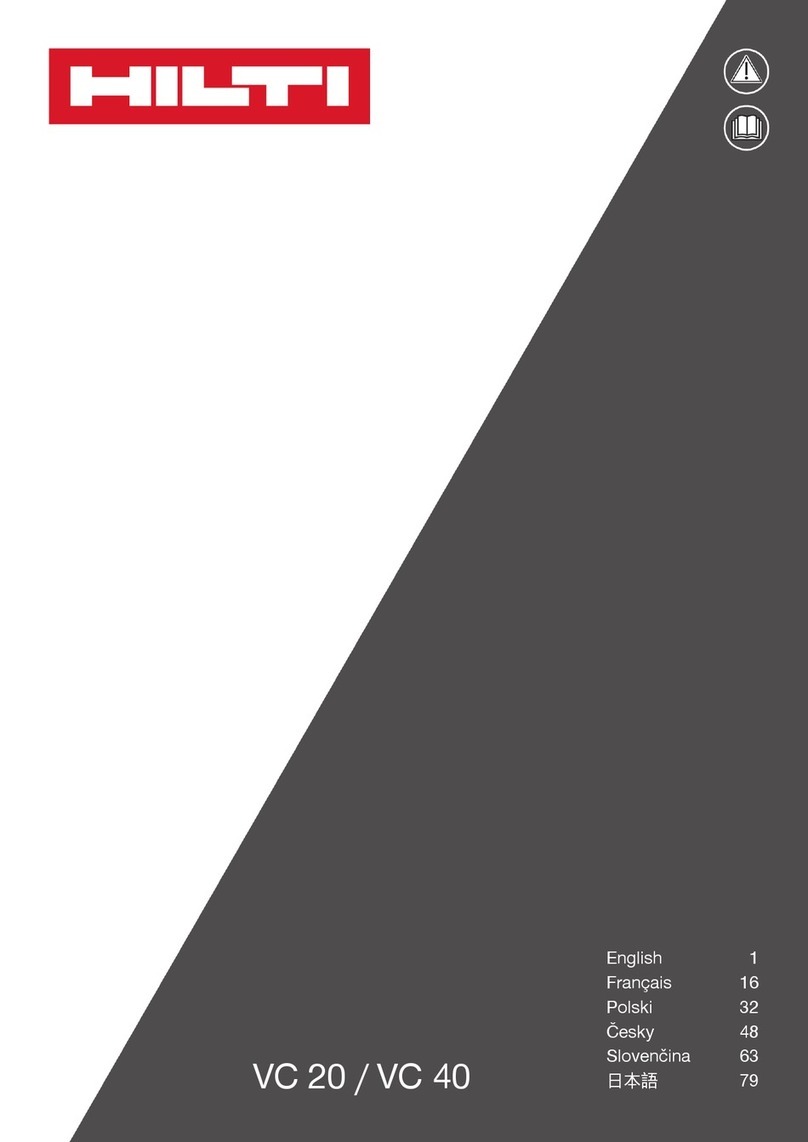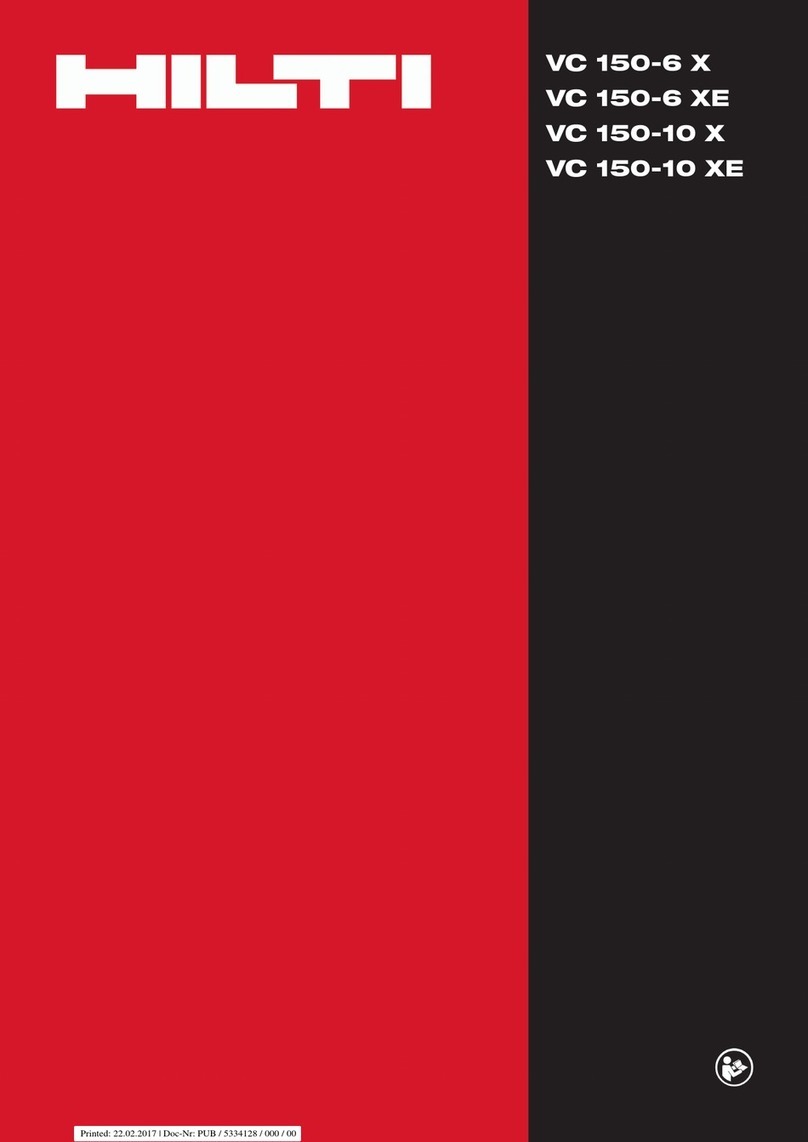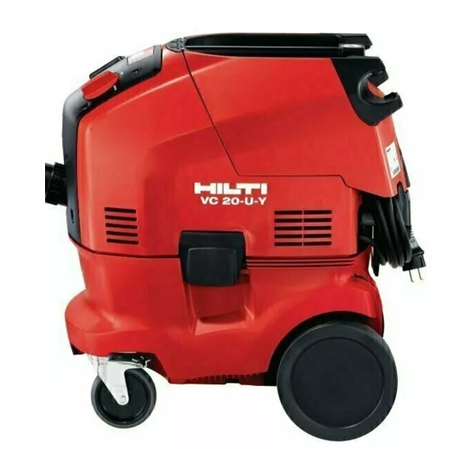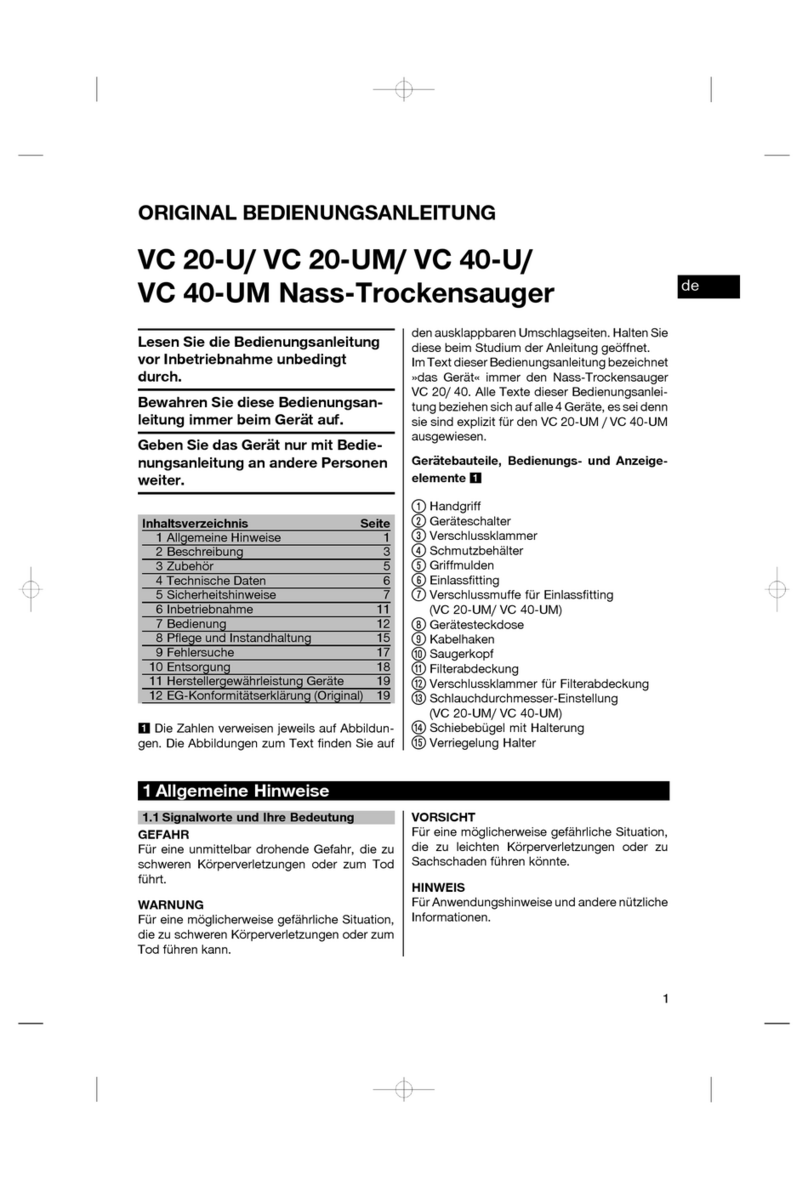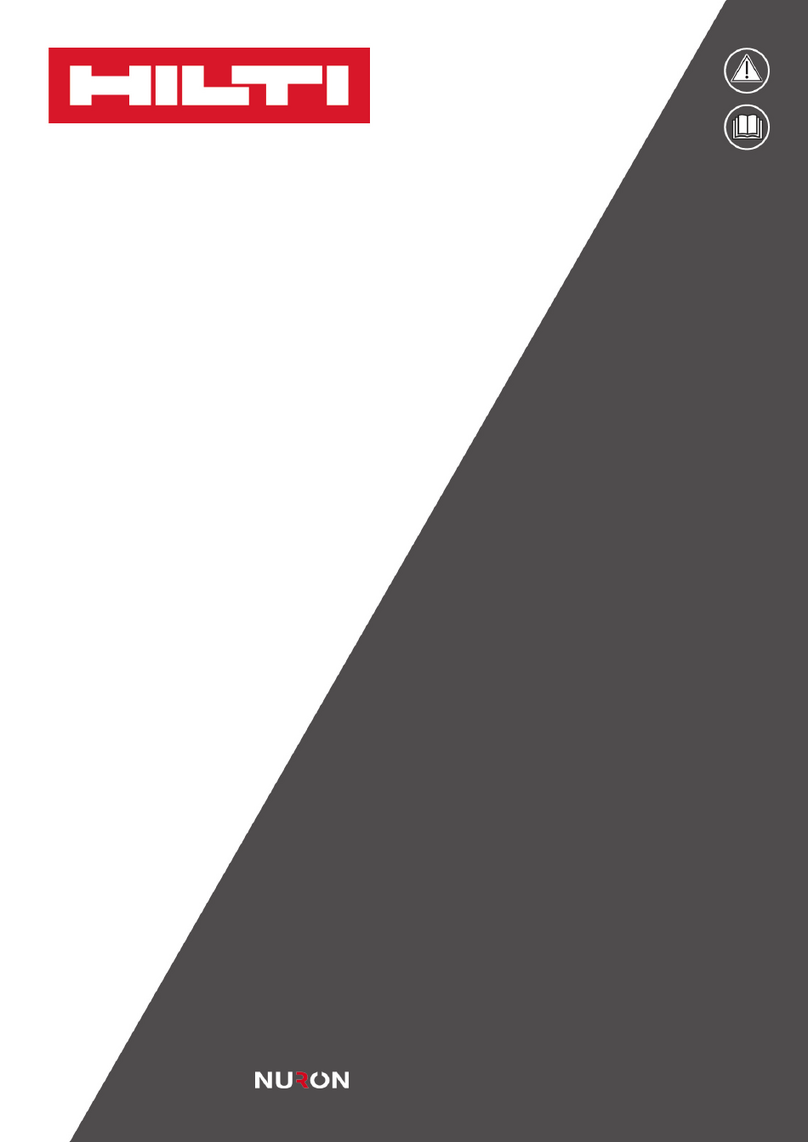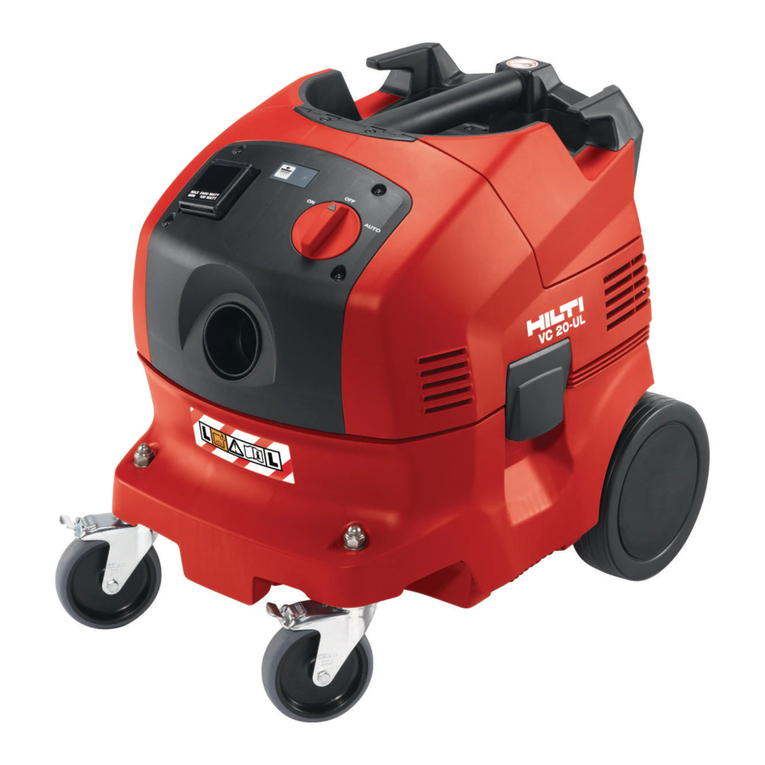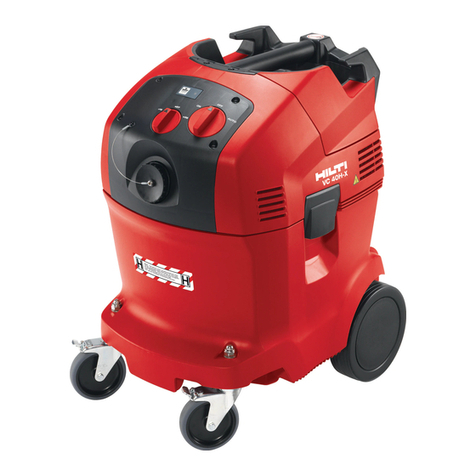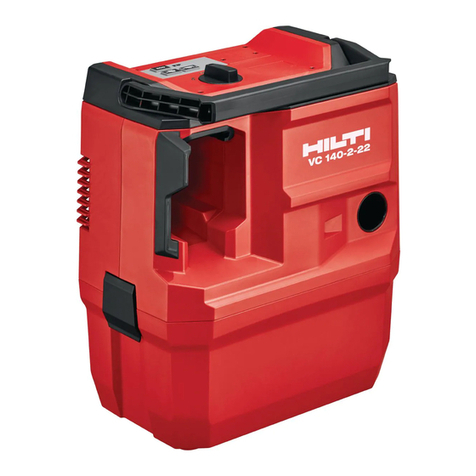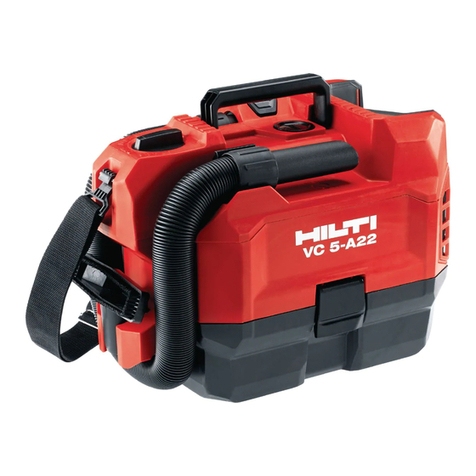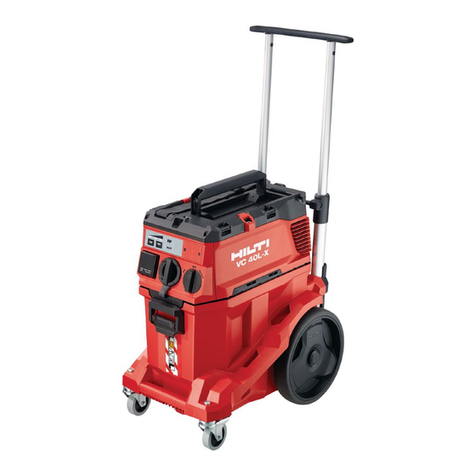
4 English 2416652 *2416652*
▶Have your product repaired only by qualified, skilled personnel, using only genuine Hilti spare parts. This
ensures that the safety of the product is maintained.
▶Do not transport the product by crane or with other hoists.
▶Do not stand on the product (do not use it as a substitute for a ladder).
▶Clean the water level limiting device regularly with a brush, in accordance with the instructions, and
check it for signs of damage.
▶Always activate the filter cleaning system when vacuuming up hazardous dusts, especially when the
appliance is used in combination with power tools that generate dust.
2.6 The material vacuumed up
Depending on the version, Hilti vacuum cleaners and dust extractors are classified for certain dust classes as
belonging to dust class L, M or H in accordance with EN 60335-2-69. Depending on the version, dusts only
up to the stated dust class can be vacuumed up with this product. Observe the specific national directives
on dust classifications and the correct procedures for dealing with dusts that are hazardous to health.
▶Before starting work, always check the hazard class of harmful dust that can be produced in working
operations. Materials harmful to health such as asbestos and lead are explicitly not included in the
intended use of the product and working with them is not permitted → page 5. If you work with materials
containing lead or asbestos nevertheless, the manufacturer's warranty for your product is voided.
▶The following materials are explicitly not to be vacuumed up with this product:
▶Flammable and/or explosive metallic dusts (e.g. magnesium or aluminum dust)
▶Materials hotter than 60 °C (140 °F) (e.g. glowing cigarettes, hot ashes)
▶Aggressive liquids, such as for example coolants and lubricants, gasoline, solvents, acids (pH <5),
alkalies (pH >12.5)
▶Asbestos, materials containing asbestos, lead and materials containing lead
▶Dust produced by grinding, sanding, cutting and drilling can contain dangerous chemicals. Some
examples are: lead or lead-based paints; brick, concrete and other masonry products, natural stone
and other products containing quartz; certain types of wood, such as oak, beech and chemically
treated wood; asbestos or materials that contain asbestos. Determine the exposure of the operator and
bystanders by means of the hazard classification of the materials to be worked. Implement the necessary
measures to restrict exposure to a safe level, for example by the use of a dust collection system or by
the wearing of suitable respiratory protection. The general measures for reducing exposure include:
▶working in an area that is well ventilated,
▶avoidance of prolonged contact with dust,
▶directing dust away from the face and body,
▶wearing protective clothing and washing exposed areas of the skin with water and soap.
▶Wear protective gloves when using the appliance to vacuum up hot materials at temperatures up to 60 °C
(140 °F).
▶The vacuum cleaner must be equipped with suitable filters corresponding to the hazard classification of
the dusts to be vacuumed up.
▶Do not vacuum up objects or materials that could cause injury by piercing through the dust bag (e.g.
pointed or sharp objects).
▶Switch the vacuum cleaner off immediately if foam or liquids escape from it.
▶When working with mineral drilling slurry, wear protective clothing and avoid skin contact with the slurry
(pH > 9: caustic).
▶Avoid contact with alkaline or acidic liquids. If contact accidentally occurs, rinse with water. In the event
of the liquid coming into contact with the eyes, rinse the eyes with plenty of water and consult a doctor.
